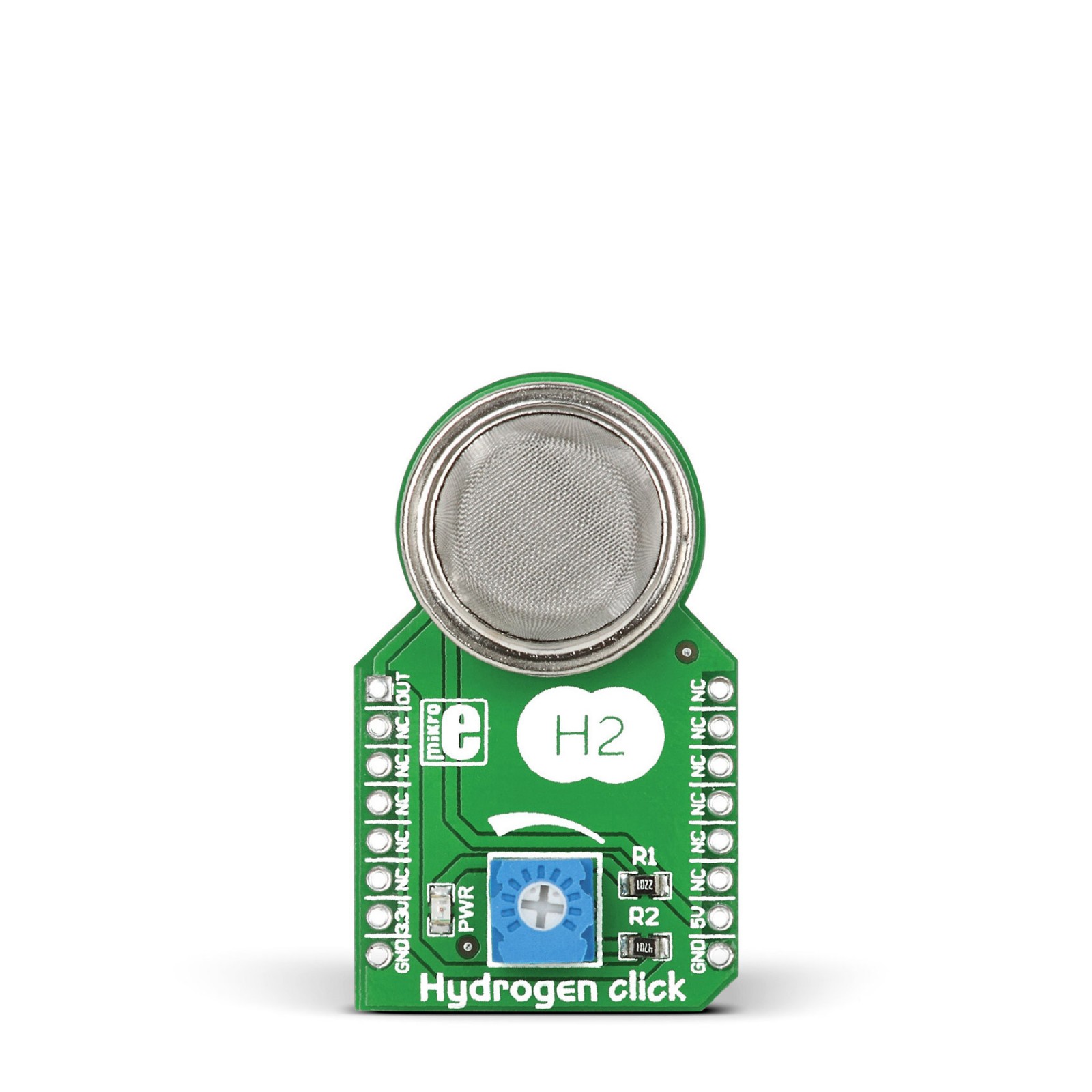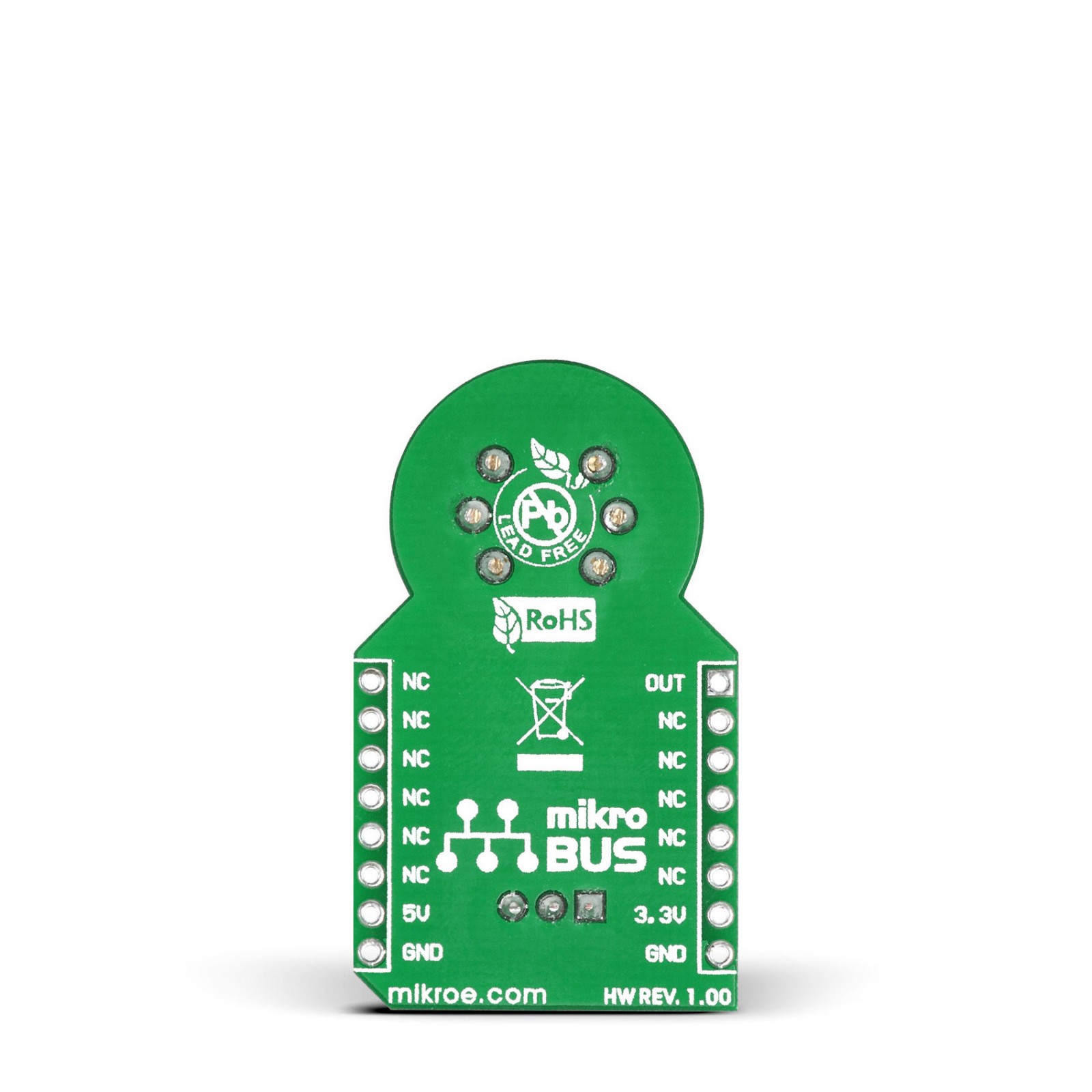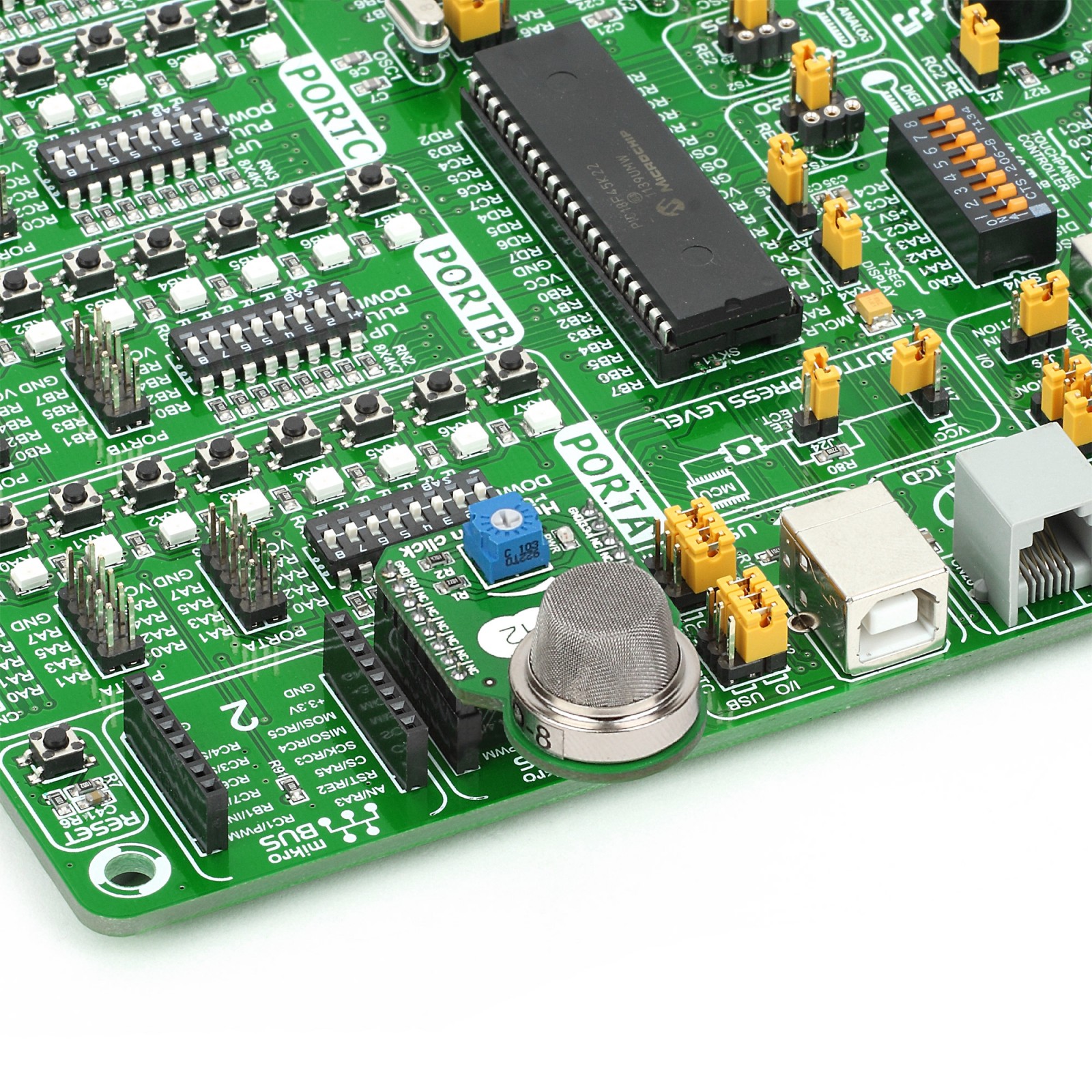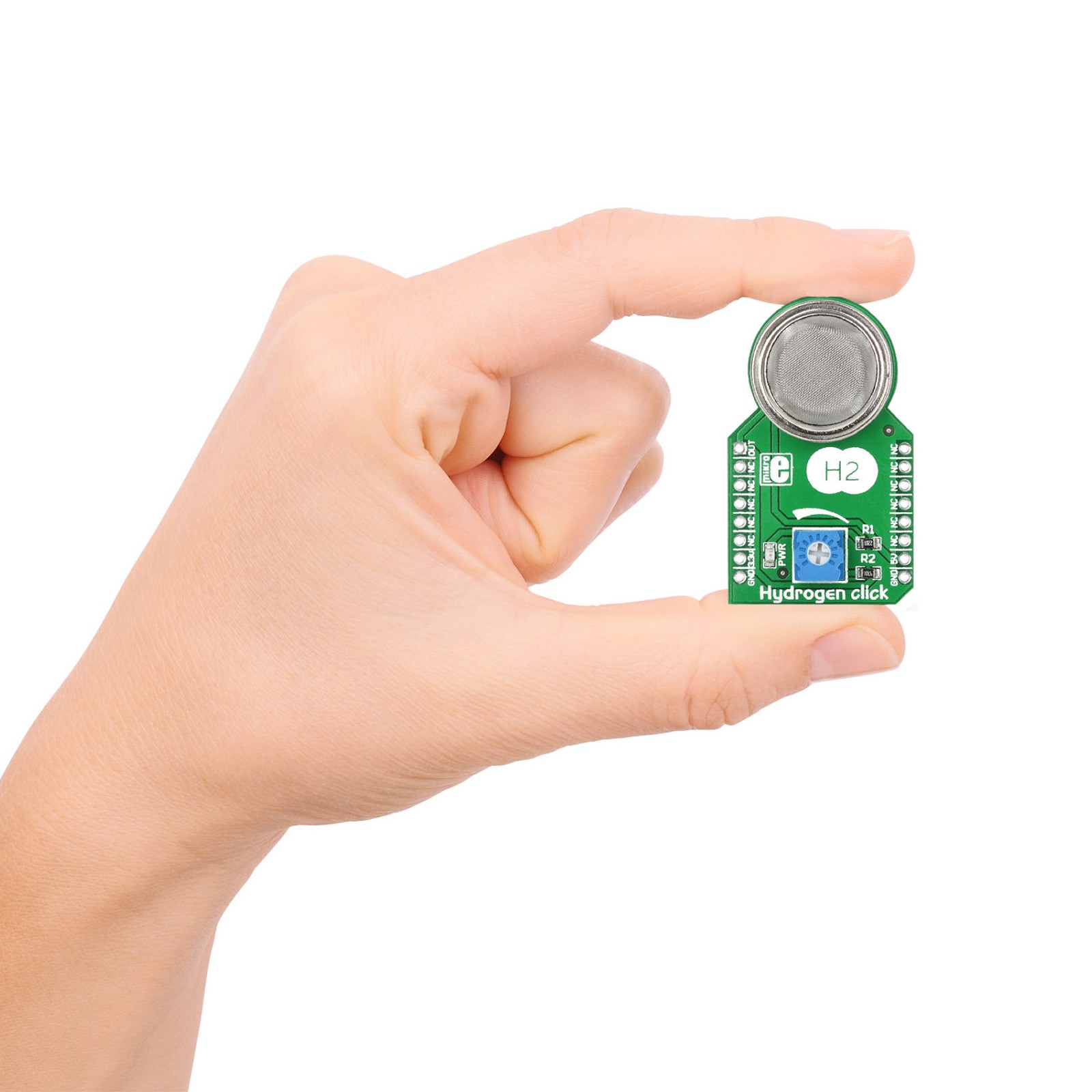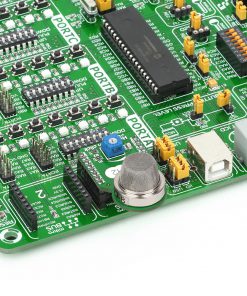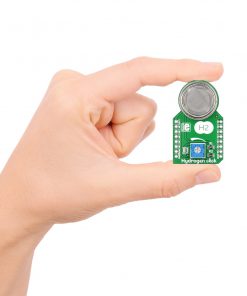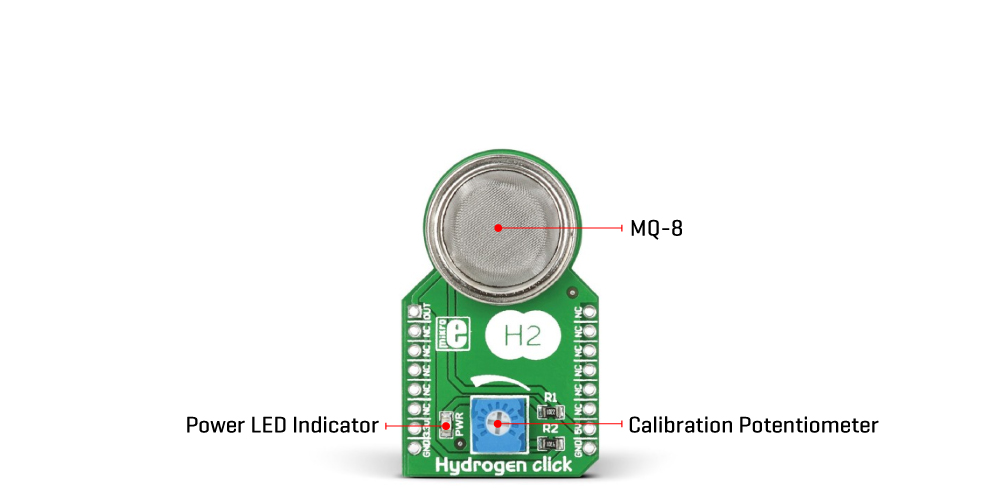HYDROGEN Click
R335.00 ex. VAT
Hydrogen Click is a compact add-on board that can detect the presence of hydrogen. This board features an MQ-8 hydrogen (H2) sensor from Zhengzhou Winsen Electronics Technology. The gas sensing layer on the MQ-8 sensor unit is made of Tin dioxide (SnO2), an inorganic compound with lower conductivity in clean air (the conductivity increases as the levels of hydrogen rise). It has a high sensitivity to hydrogen and can be used to detect hydrogen in concentrations from 100 to 10.000ppm, communicating with the host MCU through the analog mikroBUS™ line. This Click board™ is suitable as a domestic gas leakage alarm, industrial flammable gas alarm, and portable gas detector.
Hydrogen Click is supported by a mikroSDK compliant library, which includes functions that simplify software development. This Click board™ comes as a fully tested product, ready to be used on a system equipped with the mikroBUS™ socket.
Stock: Lead-time applicable.
| 5+ | R318.25 |
| 10+ | R301.50 |
| 15+ | R284.75 |
| 20+ | R274.03 |

